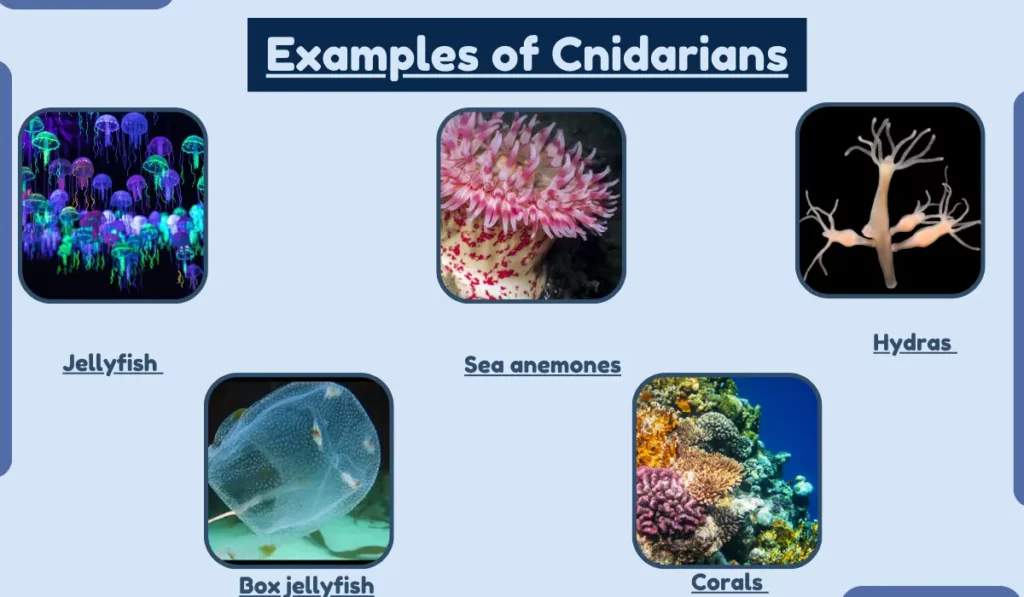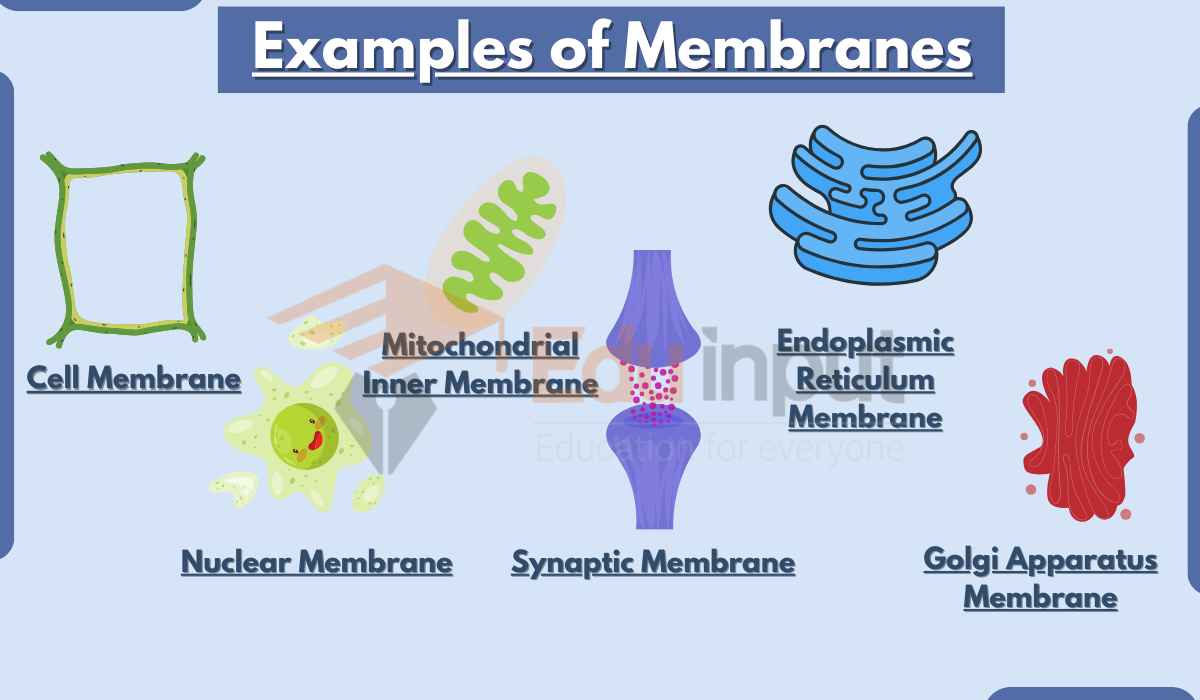10 Examples of Cnidarians
Jellyfish, hydra, coral, sea anemones, Portuguese man o’ war, box jellyfish, comb jellies, ice jellyfish, Turritopsis dohrnii, and cubozoans are examples of Cnidarians.

Examples of Cnidarians
Here are 10 examples of cnidarians:
1. Jellyfish (class Scyphozoa)
Jellyfish are the most well-known cnidarians. They are free-swimming animals with bell-shaped bodies and long tentacles. Jellyfish use their tentacles to sting prey and to defend themselves from predators. Some species of jellyfish are venomous, and their stings can be painful or even deadly to humans.
2. Box jellyfish (class Cubozoa)
Box jellyfish are a type of jellyfish that is known for its potent venom. Box jellyfish stings can be fatal to humans, and they are considered to be one of the most dangerous animals in the world.
3. Portuguese man o’ war (class Hydrozoa)
The Portuguese man o’ war is a siphonophore, which is a type of cnidarian that is made up of a colony of individual polyps. The Portuguese man o’ war has a gas-filled bladder that allows it to float on the surface of the water. It has long tentacles that are covered in stinging nematocysts.
4. Sea anemones (class Anthozoa)
Sea anemones are sessile cnidarians that attach themselves to rocks and other hard surfaces. They have cylindrical bodies and tentacles that are arranged in a ring around their mouths. Sea anemones use their tentacles to sting and capture prey.
5. Corals (class Anthozoa)
Corals are another type of sessile cnidarian. They are known for their ability to build reefs, which are important marine ecosystems. Coral reefs provide habitat for a wide variety of marine life, and they also help to protect coastlines from erosion.
6. Hydras (class Hydrozoa)
Hydras are small freshwater cnidarians. They have long, slender bodies and tentacles that are arranged around their mouths. Hydras are carnivores and feed on small aquatic animals.
7. Fire corals (class Hydrozoa)
Fire corals are a type of coral that has a venomous sting. Their stings can be painful to humans, and they can cause severe skin irritation.
8. Bluebottle jellyfish (class Hydrozoa)
The bluebottle jellyfish is a small jellyfish that is common in coastal waters around the world. It has a bright blue body and long, trailing tentacles. Bluebottle jellyfish stings can be painful, but they are not usually dangerous to humans.
9. Moon jellyfish (class Scyphozoa)
The moon jellyfish is a large jellyfish that is found in coastal waters around the world. It has a translucent body with a bell-shaped dome. Moon jellyfish are not venomous, and their stings are usually harmless to humans.
10. Compass jellyfish (class Scyphozoa)
The compass jellyfish is a small jellyfish that is found in coastal waters around the world. It has a brown body with a white compass-shaped pattern on top. Compass jellyfish stings can be painful, but they are not usually dangerous to humans.
Also Read:

 written by
written by 



